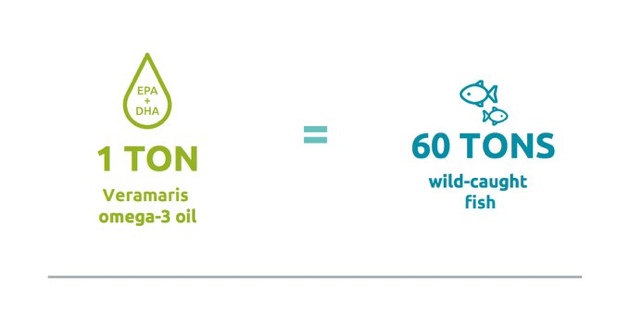The next F3 Challenge is now open!
The Problem
Fish farms, or aquaculture, now provide about half of the world’s seafood, and are poised to grow. But aquaculture’s key feed ingredient faces a supply-chain bottleneck. Fishmeal and fish oil supplies fluctuate; they are growing scarce; and their prices are rising. Fish farm owners need new and reliable ingredients to derisk their supply chain, and ensure continued production and growth.
What is more, reliance on small, wild-caught fish threatens commercial fisheries since in the wild, fish for commercial markets such as cod, salmon, tuna, eat these smaller, oily “forage fish” (sardines, anchovies and menhaden). Currently, most of these forage fish are ground up to feed for aquaculture. These small fish also sustain seabirds and marine mammals such as whales, seals and dolphins. If these fish at the center of the ocean food chain disappear, so will the life that depends on it.
The industry has made tremendous strides to vastly increase the productivity of fishmeal and oil, but if it is to expand, most scientists agree that more needs to be done to find substitute ingredients.
Substitute sources of protein exist that can substitute for protein without any impact on fish growth and health. However, there is no substitute for fish oil that is cost-effective and available at scale.
The Challenge
To Create a Fish-Free ‘Fish Oil’ Substitute Fish oil contains a number of essential fatty acids. One of those, DHA, is available from non-fish sources such as algae. However, DHA is only one of the essential fatty acids necessary for fish nutrition. Innovating a fish oil replacement that contains other essential fatty acids such as EPA and ARA in an optimal ratio to mimic the average fatty acid profile found in forage fish is the next challenge. The goal of this challenge is to reduce demand pressures on wild-caught stocks, by accelerating the availability of cost-competitive, viable substitutes for fish oil. To accelerate innovation towards a substitute for fish oil and the widespread adoption of fish-free feeds, the F3 Fish Oil Challenge has compiled the target values from four known fatty acid profiles found in forage fish that the contestants must meet.
Why Participate?
More important than the prize reward, participants gain access to significant public relations and media attention. The previous F3 (Fish-Free Feed) Challenge was mentioned over 100 times in news stories during the past year. The stories often named participants, and are targeted towards the aquafeed industry in the U.S. and abroad. In addition, participants with qualifying F3oils will be invited to an invitation-only meeting focused on substitute ingredients for aquaculture, to be held in San Francisco, California in February 2019. Participants will have the opportunity to present their products to investors, feed companies, and media.
Who Can Participate?
The contest is open to companies that sell or aim to sell a fish-free fish oil (“F3oil”) substitute as described in Product Criteria outlined in the challenge rules. These sales can be directly to end customers in aquaculture or indirectly through distribution channels during the contest period. VIEW CHALLENGE RULES
How to Win
The prize will be awarded to the team that has sold the greatest amount of DHA + EPA + ARA as calculated from sales of Qualified F3oil(s) by the end of the Challenge. Amount of DHA + EPA + ARA will be calculated using the following formula: (concentration of DHA + concentration of EPA + concentration of ARA) per unit of a single F3oil Type sold multiplied by (number of such F3oil Type sold).
F3oil Criteria
For an F3oil to qualify towards the Challenge prize, it must meet the following Product Criteria: The F3oil must:
- be in dry powder or liquid form
- be free of marine animal ingredients
- have a fatty acid profile that meets the criteria in the table below:
| Omega 6 20:04 ARA (% of total fat) | Omega 3 20:05 EPA (% of total fat) | Omega 3 22:06 DHA (% of total fat) | n3:n6 Ratio | |
|---|---|---|---|---|
| Minimum | 0.2 | 8.4 | 4.9 | 12 |
F3oil Sample Submission Requirements.
Sales Criteria: The F3oil sold must be specifically for use in aquaculture feed products. The sales must be tracked by customer, and represent only F3oil. The sales volumes must be reported at a regular frequency as outlined in the timeline section. Customer contact information must be provided to the judges, but this will be kept confidential.
Contest Duration
Registration opens on September 4, 2017 and the contest concludes on September 15, 2019. VIEW TIMELINE





